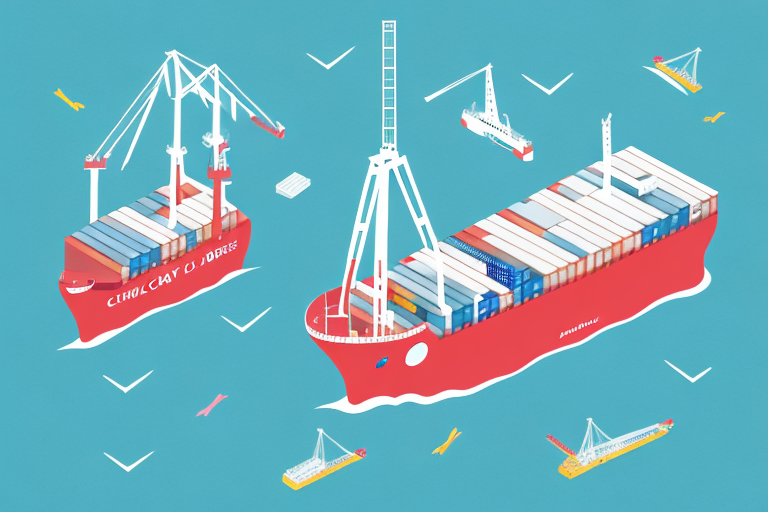Understanding the Differences Between DAP and DDP Shipping Terms
International trade offers substantial opportunities for businesses to expand their customer base and increase profitability. However, it also involves complex logistics and shipping processes that can be challenging to navigate. Choosing the right shipping terms is critical to ensuring a smooth and successful transaction. Two commonly used shipping terms are DAP (Delivered At Place) and DDP (Delivered Duty Paid). Understanding their differences is essential for optimizing your international shipping strategy. In this comprehensive guide, we will explore everything you need to know about DAP and DDP shipping terms.
Understanding DAP Shipping
Definition and Overview
DAP stands for Delivered At Place, a term defined by the International Chamber of Commerce (ICC) in the Incoterms 2020. Under DAP, the seller is responsible for delivering the goods to a specified destination, such as a shipping port or another agreed-upon location. The seller bears all risks and costs associated with transporting the goods, including loading, transit, and unloading. Once the goods reach the destination, the buyer assumes responsibility for any subsequent costs and risks, including customs clearance, import duties, and local taxes.
Key Features of DAP Shipping
- Seller's Responsibility: The seller manages all aspects of transportation until the goods reach the designated location.
- Risk Transfer: Risk transfers from the seller to the buyer once the goods are ready for unloading at the destination.
- Cost Allocation: Seller covers transportation costs, while the buyer handles import-related expenses.
- Flexibility: Allows the buyer to have control over the import process and select preferred carriers for local transport.
Advantages of DAP Shipping
- Control Over Transportation: Sellers can choose the most efficient and cost-effective means of transportation.
- Reduced Risk of Damage: Sellers ensure proper packaging and handling, minimizing the risk of damage during transit.
- Enhanced Customer Service: Direct delivery to the buyer's designated location can improve customer satisfaction.
Disadvantages of DAP Shipping
- Limited Visibility for Buyers: Buyers may find it challenging to track the shipment's progress and anticipate delays.
- Additional Local Costs: Buyers are responsible for arranging local transportation and handling import-related fees, adding complexity and cost.
- Potential for Miscommunication: Requires high coordination between buyer and seller to manage responsibilities effectively.
Understanding DDP Shipping
Definition and Overview
DDP stands for Delivered Duty Paid, another Incoterm defined by the ICC in the Incoterms 2020. Under DDP, the seller assumes full responsibility for delivering the goods to the buyer's destination, including managing customs clearance, paying import duties, and handling local taxes. This term places the maximum obligation on the seller, providing greater assurance to the buyer that all import-related processes are managed seamlessly.
Key Features of DDP Shipping
- Seller's Comprehensive Responsibility: The seller handles all aspects of transportation, including export and import formalities.
- Risk Transfer: Risk transfers to the buyer once the goods are delivered and made available at the destination.
- Cost Allocation: Seller covers all transportation and import-related costs, offering a fixed cost for the buyer.
- Simplified Import Process: Buyers are relieved from the complexities of managing import procedures and payments.
Advantages of DDP Shipping
- Complete Transparency: Buyers benefit from predictable costs, as all expenses are covered by the seller.
- Ease of Import: Sellers manage all import-related tasks, reducing administrative burdens on buyers.
- Building Trust: Sellers demonstrating responsibility can enhance trust and foster long-term business relationships.
Disadvantages of DDP Shipping
- Higher Costs for Sellers: Managing all transportation and import-related expenses can be financially burdensome.
- Complex Administration: Sellers must navigate different countries' customs regulations, which can be time-consuming.
- Less Control for Buyers: Buyers have limited control over the transportation and import processes.
Comparing DAP and DDP Shipping Terms
Main Differences
The primary distinction between DAP and DDP lies in the allocation of responsibilities and costs related to import duties and customs clearance. Under DAP, the buyer handles import duties and customs formalities, while under DDP, the seller takes on these responsibilities. This fundamental difference affects cost management, risk distribution, and administrative processes for both parties.
Cost and Risk Allocation
- DAP: Seller pays for transportation to the destination; buyer pays for import duties and taxes.
- DDP: Seller covers all transportation costs and import-related expenses, offering a turnkey solution for the buyer.
Choosing Between DAP and DDP
Factors to Consider
- Nature of the Goods: Perishable goods may benefit from DAP due to faster transit times managed by the seller.
- Destination Country's Regulations: Complex import regulations may make DDP more advantageous despite higher costs.
- Financial Capabilities: Sellers with the financial capacity may prefer DDP to offer comprehensive service.
- Administrative Resources: Companies with strong logistics teams may handle DDP without significant strain.
Best Practices for Selection
- Assess Total Costs: Consider both transportation and import-related expenses when evaluating shipping terms.
- Understand Market Expectations: Align shipping terms with industry standards and customer preferences in target markets.
- Consult Logistics Experts: Engage with freight forwarders or logistics consultants to navigate complex shipping scenarios.
Common Mistakes and Case Studies
Common Mistakes to Avoid
- Poor Communication: Failing to clearly define responsibilities can lead to misunderstandings and delays.
- Underestimating Import Costs: Not accounting for all import-related expenses can result in unexpected financial burdens.
- Ignoring Regulatory Requirements: Overlooking the destination country's customs regulations can cause shipment holds or rejections.
Case Studies: Real-Life Examples
Many businesses have leveraged both DAP and DDP shipping terms to optimize their international trade operations. For instance, a European electronics manufacturer might use DAP when exporting to the United States, allowing U.S. partners to handle customs clearance and local distribution. Conversely, an Asian apparel company could opt for DDP when shipping to smaller markets where buyers prefer a hassle-free import experience, thereby enhancing customer satisfaction and trust.
Best Practices for Managing International Shipments Using DAP and DDP Shipping Terms
To effectively manage international shipments under DAP and DDP terms, businesses should implement several best practices:
- Conduct Thorough Research: Understand all costs, risks, and regulatory requirements associated with the destination country.
- Maintain Clear Communication: Establish transparent communication channels between buyers and sellers to coordinate responsibilities and timelines.
- Utilize Advanced Logistics Tools: Employ logistics and tracking software to monitor shipments in real-time and ensure timely deliveries.
- Engage with Reputable Partners: Work with experienced freight forwarders and customs brokers to navigate complex shipping and import processes.
- Regularly Review Shipping Strategies: Continuously assess and adjust shipping terms and practices based on market changes and business needs.
Implementing these practices can help businesses mitigate risks, reduce costs, and enhance the efficiency of their international shipping operations.




















